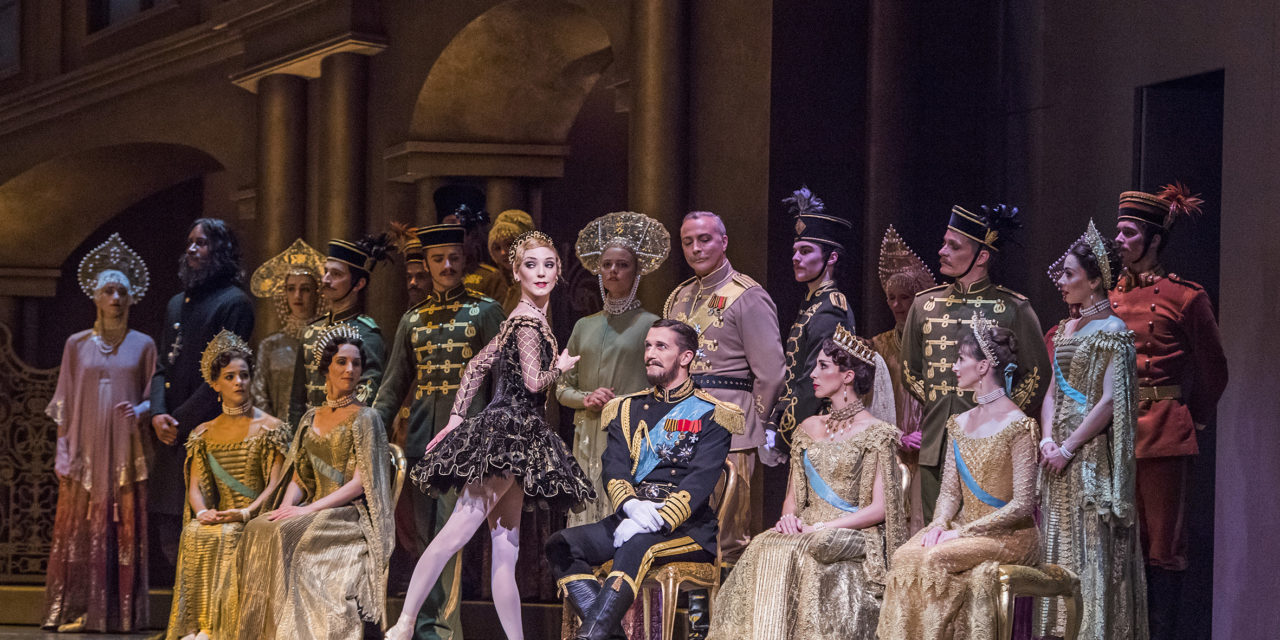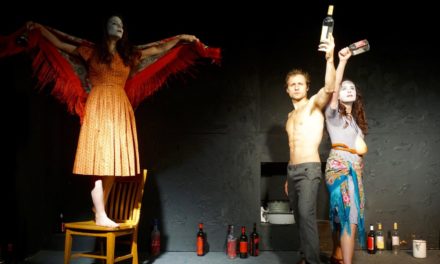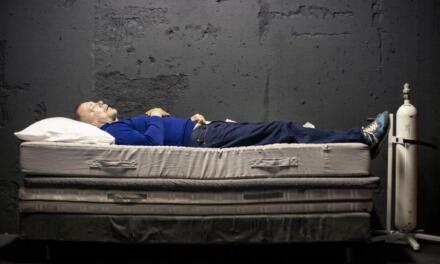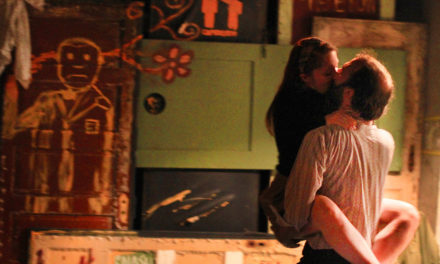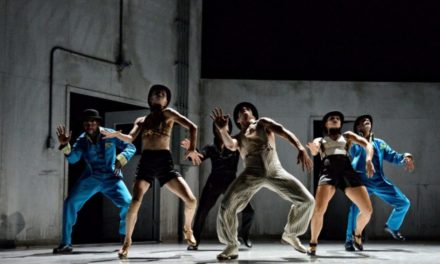The Royal Opera House’s production of the real-life mystery of Anastasia comes to a close today. On show for just over two weeks in London, the revived 1996 ballet by Kenneth MacMillan tells the tale of the supposed Grand Duchess Anastasia, the sole survivor of the assassination of the royal family and starting point for the revolution of 1917.
The ballet’s synopsis: “The distorting mirror of memory, time and place…” encapsulates the story of ‘Anna Anderson,’ exposed by a DNA test in 1994 as a Polish peasant who had traveled to Berlin to pursue an acting career. The ballet’s production merges the historical and psychological as the psychiatric patient Anna Anderson struggles with her identity, believing herself to be the true Romanov Princess Anastasia. A talented dancer, Laura Morera gives a powerful interpretation of the troubled woman throughout.
The first two acts retell the years leading up to the Great Patriotic War and are full of pomp and gaiety. The first is set at a picnic aboard the imperial yacht where were are introduced to the main characters of Anna and Rasputin, as well as the Tsar and Tsarina, their other daughters and son Tsarevich Alexey. Rasputin is venerated for his healing of the young Tsarevich and his legendary influence over the Tsarina is played out in a clever duet. An ominous blue light bathes Rasputin throughout the act, despite the glorious sunshine upon the deck of the yacht. The stage set design in this scene comes across somewhat clumsy, however, there is a moving scene in which the young Alexey inspects the imperial troops before battle.
In the second act, we are witness to the coming out of the young Anastasia in one of the imperial palaces. The Tsar has thrown a magnificent ball with a myriad of dancers. This scene is crowned by an outstanding performance by the Tsar’s favorite ballerina, elegantly danced by Yasmine Naghdi whose technical prowess and exquisite timing are sublime in the stead of Akane Takada on this occasion. The act is a captivating wonder of choreographed group dancing, costume and music by the orchestra to the masterful Tchaikovsky, so much so that this act passes almost in an instant. The scene ends with a dramatic eruption of revolution complete with fire and gunshots.
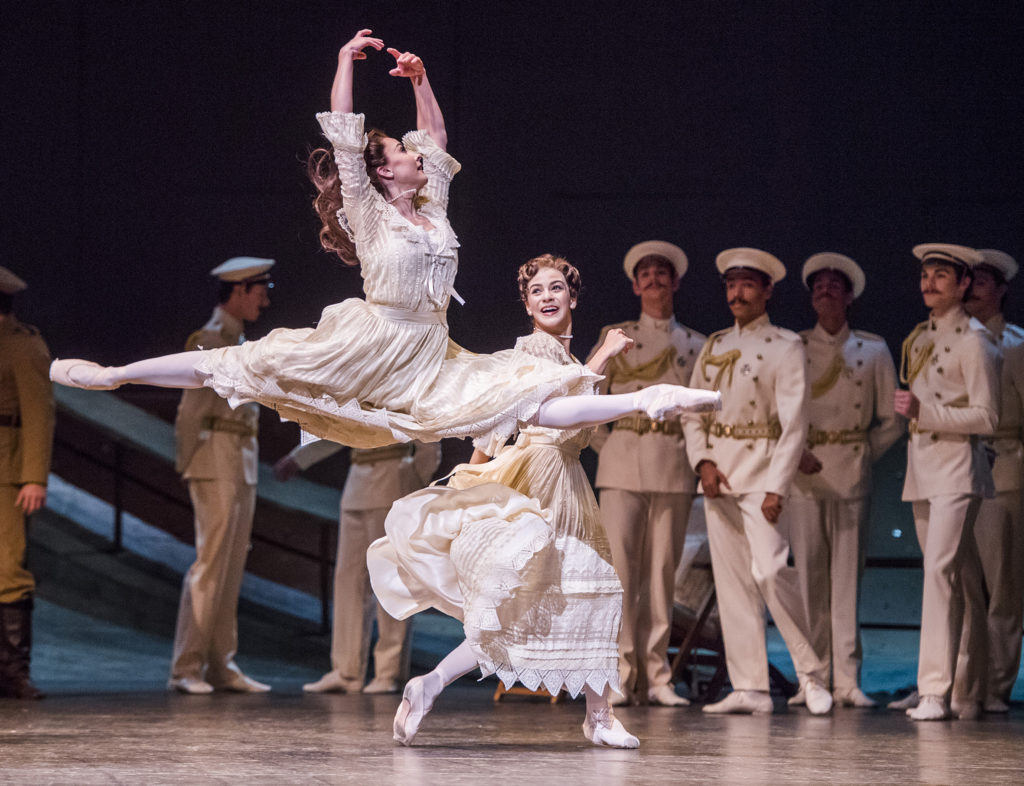
A scene from Anastasia by The Royal Ballet @ Royal Opera House. (Opening 10/28/16) © (2016) ROH. Photographed by Tristram Kenton.
Those expecting a reflection of the 1997 animated version of the tale are brought crashing back to earth in the electrifying third act when the delusion of the Tsarina’s imperial life is torn apart like the fabric of imperial Russia itself. The real Anna now finds herself in an asylum in Berlin where she is haunted by visions of Rasputin and fragments of her delusional life. The raw choreography of this act is an impressively unexpected contemporary depiction of Anna’s anxiety at her incarceration. In distinct contrast to the first two acts, Anna’s uncomfortably fractured and vulnerable poses add a powerfully emotive edge to the scene. Concurrently, Rasputin’s shadow-like rendering in the first acts dissipates in this fantastical world created by Anna. The omnipresent blue light that followed the shaman in the first acts now fills the room and Rasputin becomes formidable in his portrayal by the talented Ryoichi Hirano. The stage itself becomes devoid of the gentle splendor of the first and second acts and the minimal concrete confines mimic post-revolution Soviet Russia. This new Russia is a chilling place; doors and exits to a different world seemingly disappear and Anna is haunted by confrontations with relatives that may or may not be her own. There is near-constant army presence in the third act, intermittently filling the room with fear. In one instance the guards point their rifles into the audience, echoing the appalling Purges of the Soviet regime. This searing third act is coupled with music by Martinů’s progressive Fantasies Symphoniques, which like Anna, finds a musical balance between light and dark, life and death.
MacMillan’s challenging of classical ballet allows us to engage with the rich emotional and psychological life of these historical characters, beautifully and harrowingly danced in Anastasia. There is some wonderful choreography in the first two acts and Act 1 in particular sincerely conveys a real sense of family relationships culminating in a dramatic and haunting third act. In the lead up to the centenary of the Russian Revolution in 2017, we can be sure to see more fantastic cultural offerings in and around London. For further details, please visit the website.
This post first appeared on Russian Art + Culture on November 12, 2016 and has been reposted with permission.
This post was written by the author in their personal capacity.The opinions expressed in this article are the author’s own and do not reflect the view of The Theatre Times, their staff or collaborators.
This post was written by Matthew Burgess.
The views expressed here belong to the author and do not necessarily reflect our views and opinions.

